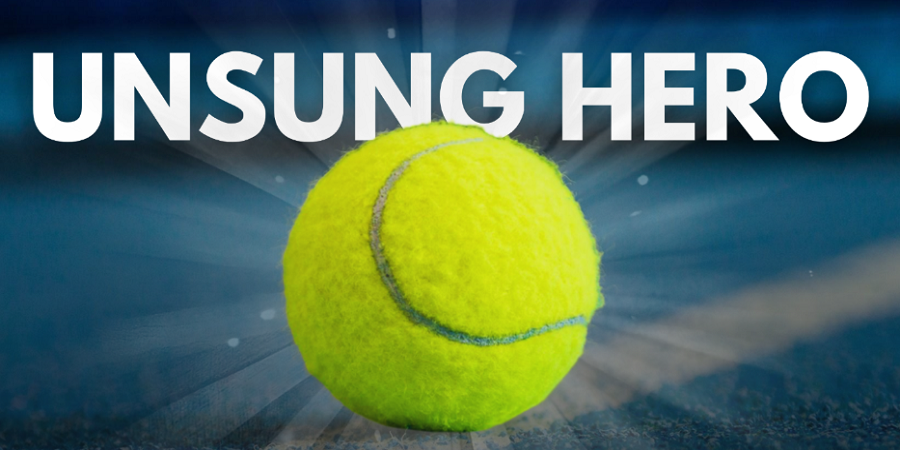Tennis balls are an essential component of one of the world’s most popular sports. These small, fuzzy spheres play a crucial role in the game of tennis, affecting everything from player performance to match outcomes. In this comprehensive guide, we’ll explore the history, manufacturing process, and various aspects of tennis balls that make them unique and indispensable to the sport.
Meanwhile, if you want to try your hands in Perya Color Game, visit GameZone. Tap into the thrilling world of online gaming in GameZone casino.
A Brief History of Tennis Balls
The evolution of tennis balls is closely tied to the history of tennis itself. The sport, which originated in 12th-century France, initially used bare hands to hit a ball over a net. As the game evolved, players began using gloves, then paddles, and finally rackets.
Early tennis balls were made of leather stuffed with hair or wool. These primitive balls were far from the standardized equipment we use today. They varied greatly in size, weight, and bounce, making the game unpredictable and often frustrating for players. The inconsistency of these early balls led to a constant search for better materials and construction methods.
It wasn’t until the late 19th century that rubber balls covered in flannel became the standard. This innovation marked a significant turning point in the sport’s history. The rubber core provided a more consistent bounce, while the flannel cover improved grip and control. These new balls allowed players to develop more sophisticated techniques and strategies, elevating the game to new heights.
The iconic optic yellow color, now synonymous with tennis balls, was introduced in 1972 to improve visibility on television broadcasts. This seemingly simple change had a profound impact on the sport’s popularity, making it more accessible and enjoyable for viewers around the world.
The Anatomy of a Modern Tennis Ball
Today’s tennis balls consist of several key components, each carefully designed to meet the demands of modern play:
- Core: A hollow rubber sphere filled with pressurized gas. The core is the heart of the tennis ball, providing its bounce and resilience.
- Felt: A layer of wool or nylon felt covering the rubber core. This felt layer plays a crucial role in determining the ball’s speed, spin, and aerodynamics.
- Dye: The distinctive optic yellow color that enhances visibility. While this color is now standard, some tournaments, like Wimbledon, still use traditional white balls.
The Manufacturing Process
The production of tennis balls is a precise and highly regulated process, ensuring consistency and quality across millions of balls:
- Core Creation: Rubber is molded into two hemispheres, which are then joined together to form a hollow sphere. This process requires precise temperature and pressure control to achieve the desired elasticity.
- Pressurization: The rubber core is filled with pressurized nitrogen or air. The amount of pressure is carefully regulated to meet official standards for bounce and compression.
- Felt Application: Two dumbbell-shaped pieces of felt are applied to the core and bonded using rubber cement. The felt is typically a blend of wool and nylon, chosen for its durability and ability to affect the ball’s flight characteristics.
- Steaming and Shaping: The balls are steamed to raise the felt’s nap and then shaped to achieve a perfect sphere. This process is crucial for ensuring uniform performance across all balls.
- Quality Control: Rigorous testing ensures each ball meets strict standards for weight, size, and bounce. Balls that don’t meet these standards are discarded or repurposed.
Types of Tennis Balls
Different types of tennis balls are designed for various playing conditions and skill levels:
- Regular Duty: Ideal for clay and indoor courts. These balls have a thinner felt cover, allowing for better performance on softer surfaces.
- Extra Duty: Designed for hard courts, featuring a tougher felt cover. The thicker felt helps the ball withstand the abrasive nature of hard court surfaces.
- High Altitude: For play at elevations above 3,500 feet, with reduced internal pressure. These balls compensate for the thinner air at high altitudes, which would otherwise cause regular balls to bounce too high.
- Pressureless: Longer-lasting balls used for practice and teaching. While they don’t provide the same performance as pressurized balls, they maintain their bounce for much longer periods.
The Impact of Tennis Balls on Play
The characteristics of tennis balls significantly influence gameplay:
- Bounce: The ball’s bounce affects the speed and style of play. A higher bounce can lead to slower, more strategic play, while a lower bounce often results in faster, more aggressive tennis.
- Spin: The felt cover allows players to impart spin, creating various shot types. The interaction between the ball’s felt and the racket strings is crucial for generating topspin, backspin, and sidespin.
- Speed: Ball speed is crucial in professional matches and is carefully controlled. Faster balls generally favor big servers and aggressive players, while slower balls can lead to longer rallies and more tactical play.
Tennis Ball Lifespan and Replacement
Professional tournaments typically replace balls every seven to nine games to ensure consistent play. This frequent replacement is necessary because tennis balls gradually lose pressure and wear down with use, affecting their performance characteristics.
Recreational players should consider replacing balls when they lose their bounce or become visibly worn. While it’s not practical for casual players to replace balls as often as professionals do, using fresh balls can significantly improve the playing experience and reduce the risk of injury.
Innovations in Tennis Ball Technology
The tennis ball industry continues to evolve, with new technologies aimed at improving performance and sustainability:
- Sensor-Equipped Balls: Some balls now contain sensors to track speed and spin, providing valuable data for players and coaches.
- Eco-Friendly Materials: Manufacturers are exploring sustainable alternatives to traditional materials, such as biodegradable rubber compounds and recycled felt.
- Extended-Life Balls: New technologies aim to increase ball longevity, reducing waste and cost for players.
The Role of Tennis Balls in Professional Play
In professional tennis, balls are subject to strict regulations:
- ITF Approval: All balls used in official tournaments must be approved by the International Tennis Federation (ITF). This approval process ensures consistency and fairness across all professional matches.
- Ball Changes: Specific rules govern when and how often balls are replaced during matches. These rules are designed to maintain consistent playing conditions throughout a match.
- Ball Selection: Players can choose from approved balls before matches, potentially affecting their strategy. Some players prefer certain brands or types of balls that complement their playing style.









